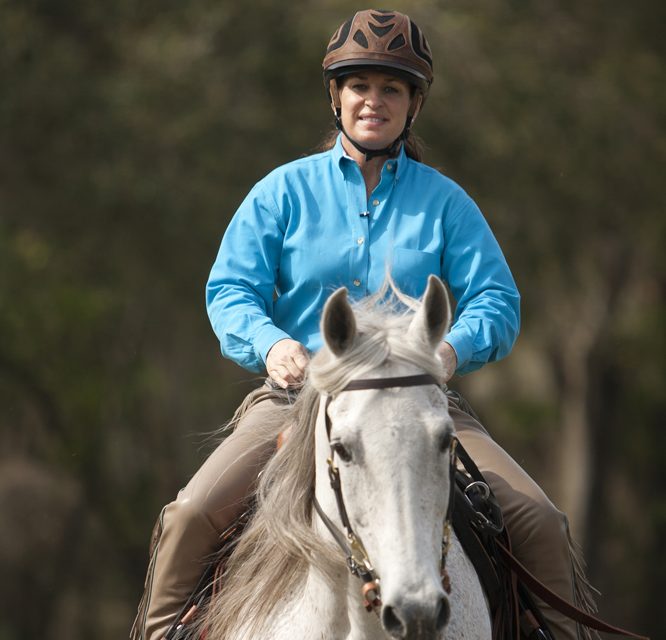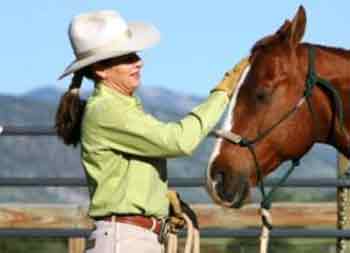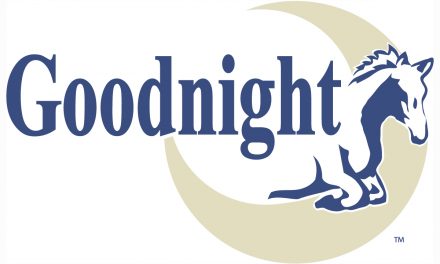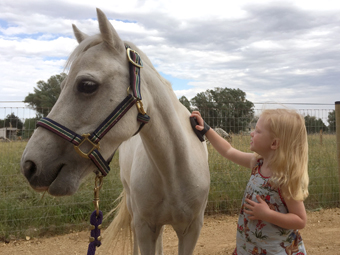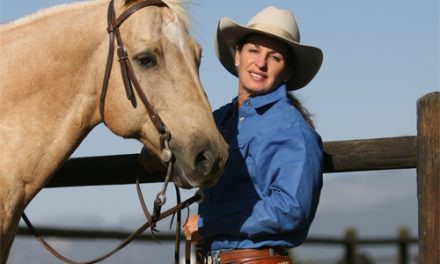H
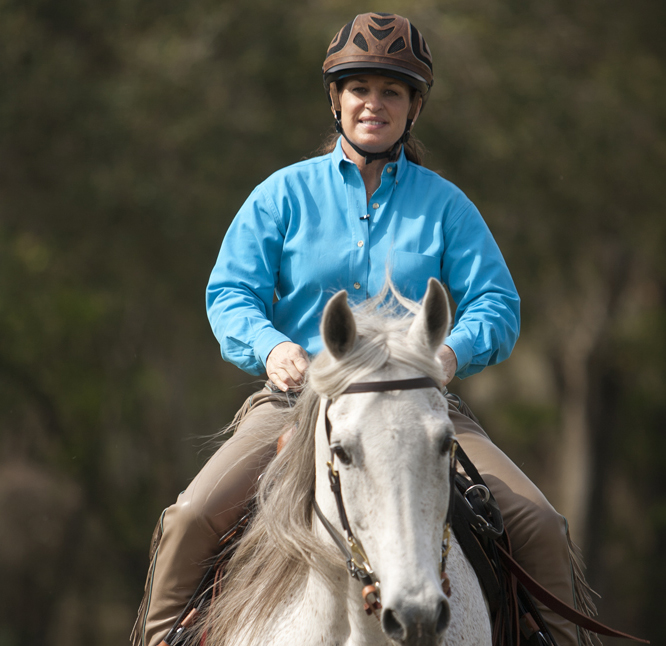
Dear Julie,
I work part-time for the Forest Service at a horse campground. If often hear trail riders who come to the campground say they’ve been told to ride with very loose rein. They have their reins hanging down so low that if a horse got spooked and took off, there’s no chance that they could gather their reins fast enough–it would be like reeling in a catfish that’s 60 yards out. I keep my reins loose enough to have contact on the mouth. I know I learned that somewhere and I thought it was from you. So what do you think? Slight contact or loose as a goose?
Loosey Goosey
Dear Loosey Goosey,
As usual, the truth lies somewhere in the middle—not too tight and not too loose. I prefer that my students ride with a loose rein, especially when I want my horse to be relaxed—such as when trail riding. However, the reins should not be so long that they put you at risk. As I say in my clinics, too much of a good thing is a bad thing.
I like to see a small drape in the reins for casual riding. I think all horses should tolerate working on contact and also on a loose rein, depending on what you are asking of the horse. In most training sessions I do with my horse, we’ll start working on a loose rein—keeping a slow and steady cadence, then we’ll work on-contact in a collected frame and we’ll also work in a collected frame but on a loose rein (the horse comes off the contact instead of on it).
As you know, most horse’s problems are caused by the rider. Too much contact is a big culprit. Most people are holding the reins with meaningless contact and every time the horse tries to relax and drop his head, he hits the bit and his head pops up. This causes irritation and tension in a horse (not to mention pain), so he tends to speed up, and the rider holds the reins tighter and the downward spiral continues. Eventually the horse cannot take it anymore and he blows up and gets labeled as a “bad” horse.
We want the horse to drop his head low so you have to have a pretty loose rein to accommodate that, by dropping your hands feeding out rein as his head lowers. But too much of a good think is a bad thing and if the horse spooked on a really loose rein, you would be off balance trying to pick the reins up in time and in the critical time you lost gathering up the reins your horse may already be in a full speed bolt—with or without you.
Personally, I’d rather see people err on the side of a loose rein, than to see the horse punished for the rider’s lack of skill or awareness. There are times when I have my reins very draped–but usually my horse’s head is down very low and I am in a stable and secure situation. While riding out on the trail, it is prudent to not drape your reins too much but be aware of your horse’s comfort and let him lower his head and relax, leaving just a small drape in the reins.
For a wealth of information on this and many other topics and to purchase educational videos and training equipment, visit my website, http://www.juliegoodnight.com.
Coming Next:Julie Goodnight reveals the scenarios and answers she’s asked to help with most often. Goodnight will help you understand why your horse does what he does and give you step-by-step directions to help you solve the problem. Watch “Horse Master” with Julie Goodnight on RFD-TV every Wednesday at 5:30p EST —Direct TV channel 379, Dish Network channel 231 or 9398 or catch clips online at juliegoodnight.com or youtube.com/juliegoodnight. JG

